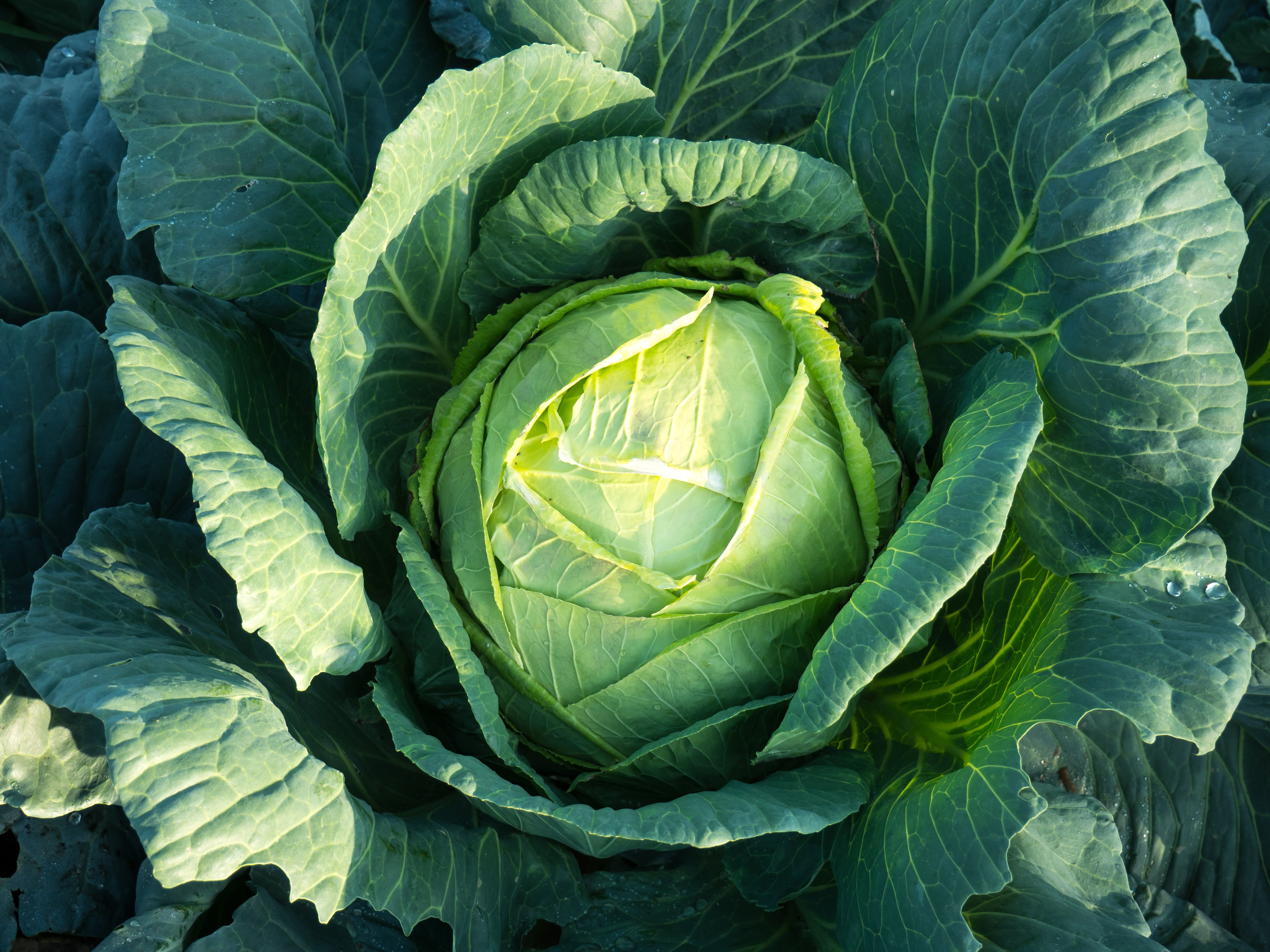03 Apr, 2023
The Foundations of Happy Hormones with our Nutrition Expert Phoebe
A hormone is defined as a biological substance that is produced by a gland, that then travels to its target organ and has resultant effects. But how to lay the foundations for happy hormones? And to tell when they're happy? We breakdown a holistic approach to balancing our hormones with nutritional therapist Phoebe Liebling. Find full details below on our NEW 10-Day Spring Balance programme, designed to help balance your hormones and have you feeling more like you again.
HealthThe foundations of happy hormones pretty much boils down to optimal digestive and liver function because it’s these guys that ensure proper balance and removal of hormones once they’ve had their actions; the majority of hormonal imbalance is related to improper excretion and recirculation of hormone metabolites. This then increases the concentrations of those hormones within our system leading to symptoms, and/or places additional burden on our micronutrient levels to address their impacts.
We have to create a consistent pathway for those hormones to leave our bodies in our bowel movements. I have tried to say that as delicately as possible but to ensure everyone has caught my drift, I’m talking 1-3, easy to pass, well formed, full bowel movements per day.
Our hormones have quite a significant impact on our digestive motility. As you come to learn your own tune and rhythm through your monthly cycle, you’ll notice the small tweaks you need to make at each point in order to maintain this regularity.
This will also link to other elements of our routine such as our interaction with stimulants, the regulation of our blood sugar levels, how we sleep and how we exercise as these, believe it or not, will all loop back round again as elements that impact our gut health.
PUTTING THIS INTO PRACTICE
1. Soluble:Insoluble Fibre Ratio.
We need plenty of fibre in our diet but more isn’t always better if we’re getting the balance between the types wrong. Insoluble fibre provides bulk and tickling stimulus to the intestinal muscles to contract effectively. Soluble fibre comparatively is absorbent and aids smooth transit by drawing fluid into the colon. Soluble fibre is also the form that will bind with hormones for removal and in my experience it’s often simple therapeutic dosing of this that can solve mild hormonal imbalance situations.
Particularly useful sources are freshly ground flaxseed as the lignans within this can bind to excess oestrogen for removal. Soaked psyllium husk is also wonderful for this too. You want to make sure you are hydrating these before they enter the body by soaking or mixing them with warm water, herbal tea or a milk of choice depending on how you are featuring them. Options such as a flax porridge, or adding psyllium into a smoothie work really nicely.
Chia water is also a brilliant way to gently and progressively support transit. Simply add 2 tablespoons of whole chia seeds to a litre of water. Shake well, add a pinch of salt and leave the seeds to swell for 30 minutes. Shake the bottle again and drink over the course of the day alongside other fluids.
Beans, pulses and legumes will also often be suggested as great hormone supportive foods and this is very true, however there is a proviso that if your digestion isn’t optimal, and/or you aren’t used to consuming lots of these things that we want to gradually incorporate them. We really want to be soaking them well first too. This is because the outer casings of these foods contain anti-nutrient compounds such as phytic acid and saponins which can be hard to breakdown leading to gas and discomfort, as well as blocking uptake of certain nutrients such as iron, calcium, zinc and magnesium which are critical for hormone balancing processes.
And just as a lovely little tidying up titbit to wrap this section for you….low fibre diets, especially those rich in fat and protein are associated with higher levels of beta glucuronidases (a family of enzymes found in the gut). And this is important because beta glucuronidases reactivate unbound oestrogens allowing them to be recirculated. Not only is high beta glucuronidase a marker for gut microorganism imbalance but it is also implicated in the onset of issues such as endometriosis and some forms of breast cancer.
2. Protein Intake.
Protein is a key element of our diets, and from a hormonal health perspective it has 2 key actions to highlight. The first is that it provides amino acids to make our peptide hormones which include insulin, ACTH, growth hormone and prolactin. (We have 3 main types of hormone - peptide, steroid and amine. Our reproductive hormones are steroid hormones). The second is that adequate protein intake will stabilise blood sugar levels, encourage metabolic efficacy, a good lean muscle mass percentage and optimal immune function.
Taking a moment to focus on blood sugar regulation for a moment, there is a huge weight of evidence that points to the impact of insulin sensitivity on our overall hormonal health. Many disorders of reproductive hormone function such as PCOS and endometriosis, as well as symptom based situations such as PMS and perimenopause, are related to changes in insulin sensitivity. What we want to ensure therefore is that we are giving our body the opportunity to do everything in the best way it possibly can and this will involve eating in both a pattern and proportions that create sensationally stable blood sugar levels.
A basic ratio to aim for would be a minimum of 30-35g protein per meal, 1-2 tablespoons of a healthy fat (some of this might be covered in the protein depending on the source you choose), a couple of good handfuls of non- starchy veg, and then your final element of your plate is your slow burning carbs. The easiest way to know if you’re getting this balance right is if you can happily go 3.5-4 hours between your meals without feeling hungry. That gap allows insulin levels to fall, which in turn means you will metabolise energy stores for fuel rather than putting fuel into storage which is what happens when insulin levels are high.
The Link Between Blood Sugar & Perimenopause
As a little point to highlight here as it can be a great concern for many women, it’s this process that causes perimenopausal weight gain. This is because falling oestrogen and progesterone levels increase insulin as a result. Plus the fluctuations during the perimenopausal transition act as an internal stressor which drives stress hormone levels up. This then pushes insulin up further gearing the body strongly to survival AKA storage mode. So the key things for a woman entering this phase would be: To prioritise rest and calming forms of low intensity steady state exercise (walking, swimming, pilates, yoga) + strength training to maintain metabolic efficacy.
Look at a diet rich in protein, non-starchy veg and healthy fats, with carbs featuring in the evening. Consider herbal and/or hormonal support to support their body through this evolution. Suffering or even just compromising on quality of life is not something anyone should be doing anymore.
Adrenal Awareness
A speedy continuation of the point above just to say that from ovulation to the commencement of a woman’s period her body is under more significant pressure, insulin sensitivity goes down and sleep and rest should be a priority to avoid adding extra burden to this picture through stress hormone levels also going up.
Limiting or avoiding caffeine and alcohol, altering exercise to be lower intensity, and looking at a little bit more protein and fat within meals all mitigate these impacts and are associated with long term hormonal harmony. This can make the difference between period pain and no period pain, an irregular to regular cycle, and completely switched mood stability depending on the underlying driver for those issues.
Specific Foods
There are so many things I wanted to pick as targeted foods for hormonal health but when drilling it down to those that really pack a punch, the following are my absolute key inclusions.
- Bitter & Sulphur Rich Foods. Often referred to as cholagogues these are your foods that stimulate liver function and bowel motility. Have at least 1 portion if not more on a daily basis somewhere varying over the weeks. If you can start your meals with 1-2 of these then even better! Eg. Artichoke, asparagus, broccoli, cauliflower, cabbage, kohlrabi, chicory, endive, walnuts, pumpkin seeds, sesame, garlic.
- Fresh Herbs. Are absolute powerhouses when it comes to vitamins, minerals & antioxidants. Blend with garlic, olive oil, capers, spices and nuts/seeds to make salsas and pestos then use these as part of dips, spreads, tossed through warm grains or veggies so they aren’t directly cooked to preserve their nutrient integrity.
- Fenugreek. Is specifically for balancing testosterone levels so can be incredibly useful where there is dysfunction in this part of the web (such as amenorrhea, menopause or PCOS). Crush the whole seeds lightly and steep in hot water for 10-15 minutes then sip the tea daily.
- Ferments. Balanced gut bacteria levels and a consistent intestinal environment is the foundation of hormonal health. Aim to slowly dose yourself up towards 1-2 tablespoons daily of a combination of any of the following. Try to vary the types of ferments in your diet. Ensure all of your ferments are raw and unpasteurised too as otherwise it means they’ve been heated which destroys their probiotic power! Eg. Kefir (water, coconut, dairy), sauerkraut, kimchi, other lacto-fermented vegetables, natto, tempeh, fresh miso paste, raw apple cider vinegar, kombucha (check it doesn’t contain sweeteners like erythritol, mannitol or stevia)
- Omega 3 sources. Hormonal fluctuations actually create inflammation within the body as part of your immune system’s survival mechanism. Just before a woman’s period, when oestrogen and progesterone fall we see a spike in inflammatory prostaglandins which prevents a period becoming a life threatening bleed. An optimal omega 3 status is associated with a body that is able to manage this response though and keep it from going overboard, leading to lots of uterine cramping (period pain), feeling washed out and actually being less resilient to infection (immune function drops in the luteal phase of the menstrual cycle and during perimenopause). You want to be including regular portions of sardines, mackerel, anchovies, salmon, herring and trout, cold pressed flaxseed/hemp/chia oil, and potentially a supplement too to make sure your levels are where we want them to be.
Experience a full gut reset with our 10-Day Gut Reset, offering 10 days of a delicious, gut-focussed menu and bundle of amazing gifts to nurture and support a happy, thriving gut. For transformative, long-lasting health benefits. Find out more here. Reap the rewards of the Reset with our long-term plans to set you up for long lasting health and wellbeing.
Take our quiz to discover which of our plans would be best for you!
PHOEBE LIEBLING Nutritional Therapist & Clinical DirectorBSc (Hons) DipNT, mBANT, mNNA, CNHC registered, GNC registeredDiscover more of Phoebe's work here: Natural Nourishment



